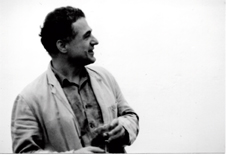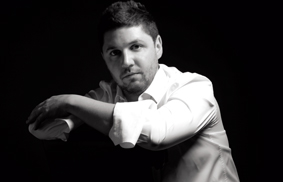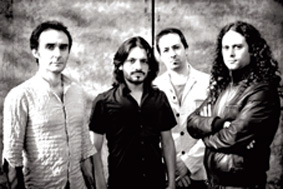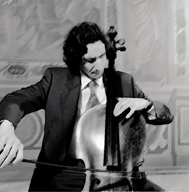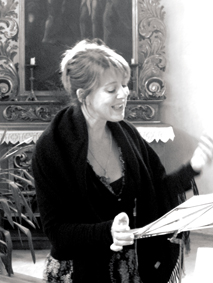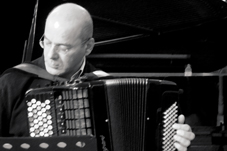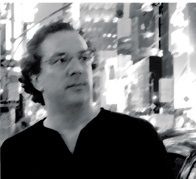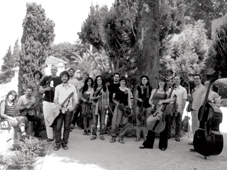Baroque Music in the 21st CenturyFifteen years ago – in 1997 – Winter&Winter issued the first production with Johann Sebastian Bach's violoncello solo suites. A key work of the baroque music marks the beginning. The recording with special handpicked microphones takes place at the wonderfully sounding Villa Medici-Giulini near Milano. The colors of the music and sound are in the focus. Paolo Beschi plays the strings of his baroque instrument not for a concert audience, this production is intended for the individual listener. It is quite clear when producer Stefan Winter and Paolo Beschi develop this sound project in Beschi's house at Lake Como that the performance for a concert audience takes place with different rules than the creating of recording art. Winter wants to have a special intimacy. It is his deep desire to record an original work for the individual listener. This record is intended for the attentive and curious listener. As a result Winter&Winter produces under special conditions two hundred new productions in the last fifteen years. It might be expected that jazz is the mainstay of Winter&Winter and therefore it might seem surprising that baroque music is a focal point in the label's works. But Stefan Winter's roots lie in the area of early music. In his youth he visits the music boarding school St. Gotthard in Niederaltaich. Dr. Konrad Ruhland teaches there. In the Sixties and Seventies Ruhland, Nikolaus Harnoncourt and other great artists develop the historical performance practice of renaissance and baroque music. Winter experiences the music of the Capella Antiqua München, the Leonhardt Consort and the Concentus Musicus Wien. Il Giardino Armonico, founded in 1985, belongs to the first generation after Harnoncourt. Paolo Beschi is a founding member of this Italian baroque group. Stefan Winter chooses him for the first CD of the Music Edition Winter&Winter in 1997.
Later, Stefan Winter starts to work also with the other founding member of Il Giardino Armonico. Lorenzo Ghielmi records seven productions including solo recordings. Winter produces also works of his brother Vittorio Ghielmi, who learns to know and appreciate the American composer and jazz musician Uri Caine. Winter is interested in creating with each recording artist a canon and these different canons cross each other from time to time. The adventure Winter&Winter begins.
2012 – fifteen years after the release of the first production – Winter&Winter publishes the 201st album with the title »Baroque Music in the 21st Century«. Bach's "Kunst der Fuge" recorded by Lorenzo and Vittorio Ghielmi is the opening track. And Paolo Beschi's prélude from the fourth violoncello solo suite completes the suite of baroque sounds. It is no coincidence to end the album with a prelude having an opening character. Uri Caine's version of the Variation 18 from the Goldberg Variations featuring Ghielmi's gamba quartet and Caine's improvisation on the Silbermann piano leads the journey through the world of baroque music from the 20th century to the threshold of the 21st century. Also this music is recorded at the Villa Medici-Giulini. Die Freitagsakademie, a special baroque ensemble of top Swiss musicians, plays with the Swedish soprano Susanne Rydén a piece of Handel. For whatever reason Bach avoided to see Handel, here the music of these two composers meet. Aarón Zapico, the young, and ambitious leader of the Spanish ensemble Forma Antiqva presents Frescobaldi's Gagliarda Prima. After Concentus Musicus and Il Giardino Armonico the group Forma Antiqva forms the third generation of artists who deal with the contemporary performance of baroque music in the 21st century. This new generation opens all doors to liberate the baroque music from a museum-like approach. After Forqueray the way turns back to Bach. The whole album revolves around this great master. The Dutch jazz musician Ernst Reijseger improvises over the harmonies of Bach's Goldberg Variations. And Teodoro Anzellotti translates the Goldberg Variations onto a new instrument. Bach does not know the accordion but probably he would have loved to write compositions like Berio, Kagel or Scarrino. Vittorio Ghielmi and his viol ensemble give us a kind of interlude written by the English composer Purcell. Bach continues. This time Uri Caine plays Bach followed by the Allegro of the third Brandenburg Concerto performed by the Freitagsakademie. This piece builds a bridge to Monika Mauch's wonderful voice. She sings with Marianne Rônez (viola d'amore) and Affetti Musicali Attilio Ariosti's "Pur al fin gentil Viola". We are back in the room built for music of the Villa Medici-Giulini. All sounds are recorded without processing as pure as possible. The brothers Zapico contribute a refreshing and invigorating "Concerto" by Kapsberger. Now sound in a new interpretation parts of The "Four Seasons" by Vivaldi. We can expect to hear some brand new and previously unheard interpretations. Nevertheless the compositions are performed on period instruments. Anzellotti enchants with the sounds of his accordion Domenico Scarlatti. Enrico Onofri – first violinist of Il Giardino Armonico – plays with Lorenzo Ghielmi and Margret Köll the music of Dario Castello. And before the final piece the Windsbacher choir blares "Tönet, ihr Pauken". And Paolo Beschi opens with the prélude from the fourth suite of Bach's violoncello solo works a new chapter, which has to be recorded.
In the middle of the last century the performance practice of baroque music has changed. No cemented scenario has determined this sound art. Instrument making is transformed, but also the performing places change their character and build. Today, receivers cannot exclusively be only found among a privileged class and baroque music cannot only be experienced in concerts, the art of recording brings the sounds into everybody's home. Winter&Winter realizes baroque music art with an own signature.
Producer Stefan Winter looks for these unconventional thinkers, who confidently transform the ancient scores into their own music and who sometimes also cross the boundaries to jazz. Uri Caine improvises with Vittorio Ghielmi, Ernst Reijseger plays Bach, Teodoro Anzellotti discovers the baroque accordion, Freitagsakademie abducts the Brandenburg Concertos from the concert hall and Aarón Zapico transforms sorrow, sadness, passion, love and happiness into sound; with youthful verve, the doctrine of affects still act after the baroque era in the here and now. |
© Winter&Winter | Impressum | Datenschutz | Press Login | Back |
